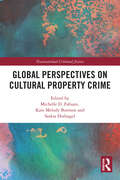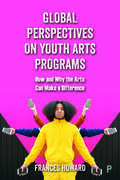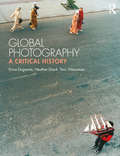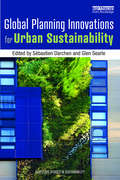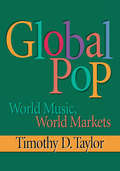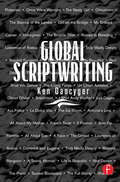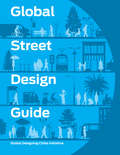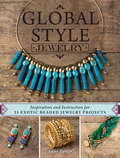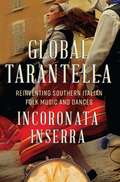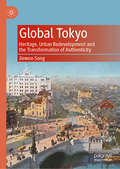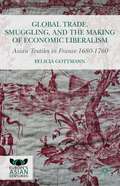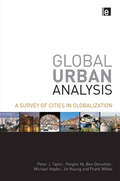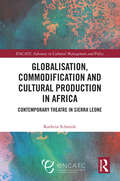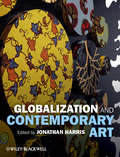- Table View
- List View
Global Perspectives on Critical Architecture: Praxis Reloaded
by Gevork HartoonianJudging from the debates taking place in both education and practice, it appears that architecture is deeply in crisis. New design and production techniques, together with the globalization of capital and even skilled-labour, have reduced architecture to a commodified object, its aesthetic qualities tapping into the current pervasive desire for the spectacular. These developments have changed the architect’s role in the design and production processes of architecture. Moreover, critical architectural theories, including those of Breton, Heidegger and Benjamin, which explored the concepts of technology, modernism, labour and capital and how technology informed the cultural, along with later theories from the 1960s, which focused more on the architect’s theorization of his/her own design strategies, seem increasingly irrelevant. In an age of digital reproduction and commodification, these theoretical approaches need to be reassessed. Bringing together essays and interviews from leading scholars such as Kenneth Frampton, Peggy Deamer, Bernard Tschumi, Donald Kunze and Marco Biraghi, this volume investigates and critically addresses various dimensions of the present crisis of architecture. It poses questions such as: Is architecture a conservative cultural product servicing a given producer/consumer system? Should architecture’s affiliative ties with capitalism be subjected to a measure of criticism that can be expanded to the entirety of the cultural realm? Is architecture’s infusion into the cultural the reason for the visibility of architecture today? What room does the city leave for architecture beyond the present delirium of spectacle? Should the thematic of various New Left criticisms of capitalism be taken as the premise of architectural criticism? Or alternatively, putting the notion of criticality aside is it enough to confine criticism to the production of insightful and pleasurable texts?
Global Perspectives on Cultural Property Crime (Transnational Criminal Justice)
by Michelle D. Fabiani, Kate Melody Burmon and Saskia HufnagelThis book provides transnational insight into cultural property crimes and the cutting-edge work tackling issues ranging from currency crimes to innovative research methods. The volume brings together authors from a number of fields to address contemporary issues and advances in the fight against cultural property crime. It combines the perspectives of law enforcement officials, researchers, journalists, lawyers, and scholars, with specialities in the disciplines of criminology, law, archaeology, museum studies, political science, and economics, from countries all around the globe. This allows for a more comprehensive examination of issues facing these professionals and highlights similarities between the challenges encountered in different disciplines as well as in diverse locations. It seeks to disseminate the most current work in this field from a broad array of viewpoints in order to further facilitate an exchange of ideas and lay the groundwork to inspire future collaborations. Most significantly, it provides more specific suggestions for moving forward that could help assist stakeholders to connect and work directly with each other, despite international borders and discipline-related boundaries. The book will be a valuable resource for researchers, practitioners, and policymakers working in the area of cultural property crime.
Global Perspectives on Indigenous Film and Literature
by Amar Ramesh Wayal A. P. AnupamaThis edited volume comprehensively explores narrative survival in Indigenous film and literature, forging a literary and transitional approach to native writing. It navigates the evolution of Indigenous voices, spanning the oral tradition and literary forms from colonial times to the present. It covers a range of issues related to indigenous inequalities and diversities in film and literature. With chapters from global perspectives, including North America, Canada, New Zealand, and South Asia, it ensures an inclusive exploration of indigenous narratives. The diverse chapters address topics such as the aboriginal experience, residential school legacy, the invisible nation of Algonquins, tribal songs, decolonial futures, caste, survival narrative, trauma, and other marginalized groups such as low castes, linguistic minorities, and Adivasis (tribals). The book focuses on innovative concepts to understand the study of a particular indigenous group in isolation from others and more than the conventional comparative study of different indigenous groups. It deals with the challenges of achieving local indigenous rights and identities. It is a valuable resource for social science and humanities scholars, particularly for indigenous scholars, development professionals and administrators interested in the issues related to social diversity and indigeneity in a global setting.
Global Perspectives on Youth Arts Programs: How and Why the Arts Can Make a Difference
by Frances HowardHow do young people develop through youth arts programs and how can these programs reflect and extend young people’s personal interests? How can youth arts support participatory democracy and social change? Frances Howard puts forward a powerful case for the value of youth arts programs, whilst acknowledging and interrogating the complexities involved, including unequal access to provision and the class-based harm that can be inadvertently practiced within them. Drawing on the author's own practice experience, alongside a range of international case studies showing best practice, this grounded and accessible text will be welcome reading to academics, students and practitioners across Education, Youth and Community courses.
Global Photography: A Critical History
by Terri Weissman Heather Diack Erina DuganneThis innovative text recounts the history of photography through a series of thematically structured chapters. Designed and written for students studying photography and its history, each chapter approaches its subject by introducing a range of international, contemporary photographers and then contextualizing their work in historical terms. The book offers students an accessible route to gain an understanding of the key genres, theories and debates that are fundamental to the study of this rich and complex medium. Individual chapters cover major topics, including: · Description and Abstraction · Truth and Fiction · The Body · Landscape · War · Politics of Representation · Form · Appropriation · Museums · The Archive · The Cinematic · Fashion Photography Boxed focus studies throughout the text offer short interviews, curatorial statements and reflections by photographers, critics and leading scholars that link photography's history with its practice. Short chapter summaries, research questions and further reading lists help to reinforce learning and promote discussion. Whether coming to the subject from an applied photography or art history background, students will benefit from this book's engaging, example-led approach to the subject, gaining a sophisticated understanding of international photography in historical terms.
Global Planning Innovations for Urban Sustainability (Routledge Studies in Sustainability)
by Sébastien Darchen Glen SearleAs the world becomes more urbanised, solutions are required to solve current challenges for three arenas of sustainability: social sustainability, environmental sustainability and urban economic sustainability. This edited volume interrogates innovative solutions for sustainability in cities around the world. The book draws on a group of 12 international case studies, including Vancouver and Calgary in Canada, San Francisco and Los Angeles in the US (North America), Yogyakarta in Indonesia, Seoul in Korea (South-East Asia), Medellin in Colombia (South America), Helsinki in Finland, Freiburg in Germany and Seville in Spain (Europe). Each case study provides key facts about the city, presents the particular urban sustainability challenge and the planning innovation process and examines what trade-offs were made between social, environmental and economic sustainability. Importantly, the book analyses to what extent these planning innovations can be translated from one context to another. This book will be essential reading to students, academics and practitioners of urban planning, urban sustainability, urban geography, architecture, urban design, environmental sciences, urban studies and politics.
Global Pop: World Music, World Markets
by Timothy D TaylorGlobal Pop examines the rise of "world musics" and "world beat", and some of the musicians associated with these recent genres such as Peter Gabriel, Ladysmith Black Mambazo, and Johnny Clegg. Drawing on a wide range of sources - academic, popular, cyber, interviews, and the music itself - Global Pop charts an accessible path through many of the issues and contradictions surrounding the contemporary movement of people and musics worldwide. Global Pop examines the range of discourses employed in and around world music, demonstrating how the central concept of authenticity is wielded by musicians, fans, and other listeners, and looks at some of these musics in detail, examining ways they are caught up in forms of domination and resistance. The book also explores how some cross-cultural collaborations may fashion new musics and identities through innovative combinations of sounds and styles.
Global Scriptwriting
by Ken DancygerGlobal Scriptwriting offers a look at an exciting new phase in screen storytelling, as writers and directors from all over the world infuse traditional forms with their own cultural values to create stories that have an international appeal and suggest a universality among readers, viewers, and listeners. A unique blend of screenwriting technique and film studies, Global Scriptwriting discusses screen stories as they have evolved through the years, focusing first on the basics of scriptwriting, then going on to afford a more sophisticated look at script via different models of scriptwriting: the Hollywood model, the independent model, the national model, and various alternative models. It examines the internationalization of storytelling, and illustrates how particular innovations have helped national screen stories to international success. This book is the first to incorporate the basics of the classical form with the innovative edge of the last decade, as well the culture specific changes that have taken place outside of North America. It offers readers a view of the enriched repertoire available to writers resulting from the introduction of cultural perspectives into traditional story forms. Specific topics examined include, the ascent of voice, the search for new forms, the struggle between style and content, and the centrality of megagenre.
Global Street Design Guide
by National Association of City Transportation Officials Global Designing Cities InitiativeEach year, 1.2 million people die from traffic fatalities, highlighting the need to design streets that offer safe and enticing travel choices for all people. Cities around the world are facing the same challenges as cities in the US, and many of these problems are rooted in outdated codes and standards.TheGlobal Street Design Guideis a timely resource that sets a global baseline for designing streets and public spaces and redefines the role of streets in a rapidly urbanizing world. The guide will broaden how to measure the success of urban streets to include: access, safety, mobility for all users, environmental quality, economic benefit, public health, and overall quality of life. The first-ever worldwide standards for designing city streets and prioritizing safety, pedestrians, transit, and sustainable mobility are presented in the guide. Participating experts from global cities have helped to develop the principles that organize the guide. TheGlobal Street Design Guidebuilds off the successful tools and tactics defined in NACTO'sUrban Street Design Guideand UrbanBikeway Design Guidewhile addressing a variety of street typologies and design elements found in various contexts around the world.This innovative guide will inspire leaders, inform practitioners, and empower communities to realize the potential in their public space networks. It will help cities unlock the potential of streets as safe, accessible, and economically sustainable places.Example cities include: Bangalore, India; Buenos Aires, Argentina; Paris, France; Copenhagen, Denmark; Seoul, Korea; Medellin, Colombia; Toronto, Canada; Istanbul, Turkey; Auckland, New Zealand; Melbourne, Australia; New York, USA; and San Francisco, USA.
Global Style Jewelry: Inspiration and Instruction for 25 Exotic Beaded Jewelry Projects
by Anne PotterInspiration and Instruction for 25 Exotic Beaded Jewelry Projects
Global Sustainability
by Md. Faruque HossainThis book focuses on holistic approaches to sustainability in all sectors of environment, energy, building, and infrastructure to achieve the best-balanced global environmental, energy, building, infrastructure, transportation, and water technologies (EBITWs). It presents a series of solutions based on innovative research and applications for building a sustainable Earth for future generations. Simply, the goal of this book is to define the context of instigation to think through the scientific theories and practical technical applications of sustainability for building a better planet. Naturally this book explains a series of mechanisms to develop a sustainable world by implementing mainly practicing the following areas of Sustainable Energy, Sustainable Housing and Building Technology, Sustainable Water, Infrastructure, and Transportation Technology, Sustainable Environment which are, very much interconnected to secure a global environmental equilibrium.
Global Sustainability in Energy, Building, Infrastructure, Transportation, and Water Technology
by Md. Faruque HossainThis book focuses on holistic approaches to sustainability in all sectors of building, infrastructure, and energy to achieve a best-balanced global energy, building, infrastructure, transportation, and water technology (EBITW) system using a series of innovative research and implementation solutions. The goal of this book is to define the context for proactive consideration of scientific theories and practical technical applications of sustainable development, following main seven themes: Renewable Energy Technology, Advanced Building Design Technology, Innovative Infrastructure and Transportation Engineering, Clean Water and Sanitation, Sustainable Urban and Rural Development, Clean Environment, and Sustainable Planet; which are very much interconnected to secure the global equilibrium. The book is prepared for a wide audience including researchers, field engineers, and students.
Global TV: Exporting Television and Culture in the World Market
by C. Lee Harrington Denise D. BielbyA reporter for the Los Angeles Times once noted that “I Love Lucy is said to be on the air somewhere in the world 24 hours a day.” That Lucy’s madcap antics can be watched anywhere at any time is thanks to television syndication, a booming global marketplace that imports and exports TV shows. Programs from different countries are packaged, bought, and sold all over the world, under the watch of an industry that is extraordinarily lucrative for major studios and production companies.In Global TV, Denise D. Bielb and C. Lee Harrington seek to understand the machinery of this marketplace, its origins and history, its inner workings, and its product management. In so doing, they are led to explore the cultural significance of this global trade, and to ask how it is so remarkably successful despite the inherent cultural differences between shows and local audiences. How do culture-specific genres like American soap operas and Latin telenovelas so easily cross borders and adapt to new cultural surroundings? Why is The Nanny, whose gum-chewing star is from Queens, New York, a smash in Italy? Importantly, Bielby and Harrington also ask which kinds of shows fail. What is lost in translation? Considering such factors as censorship and other such state-specific policies, what are the inevitable constraints of crossing over?Highly experienced in the field, Bielby and Harrington provide a unique and richly textured look at global television through a cultural lens, one that has an undeniable and complex effect on what shows succeed and which do not on an international scale.
Global Tarantella: Reinventing Southern Italian Folk Music and Dances
by Incoronata InserraTarantella, a genre of Southern Italian folk music and dance, is an international phenomenon--seen and heard in popular festivals, performed across the Italian diaspora, even adapted for New Age spiritual practices. The boom in popularity has diversified tarantella in practice while setting it within a host of new, unexpected contexts. Incoronata Inserra ventures into the history, global circulation, and recontextualization of this fascinating genre. Examining tarantella's changing image and role among Italians and Italian Americans, Inserra illuminates how factors like tourism, translation, and world music venues have shifted the ethics of place embedded in the tarantella cultural tradition. Once rural, religious, and rooted, tarantella now thrives in settings urban, secular, migrant, and ethnic. Inserra reveals how the genre's changing dynamics contribute to reimagining Southern Italian identity. At the same time, they translate tarantella into a different kind of performance that serves new social and cultural groups and purposes. Indeed, as Inserra shows, tarantella's global growth promotes a reassessment of gender relations in the Italian South and helps create space for Italian and Italian-American women to reclaim gendered aspects of the genre.
Global Telecommunications: The Technology, Administration and Policies (Routledge Library Editions: Broadcasting #22)
by Raymond AkwuleGlobal Telecommunications (1992) clarifies the complex, politically-charged arena of international telecommunications. By understanding both the demands created by dynamic Western countries in the grips of deregulation and the needs of developing nations, readers acquire an appreciation for the challenges facing global telecommunications users, developers and policymakers. This book stresses the growing need for sophisticated management of satellite and communication resources. The emerging global information society is propelled by technological innovations, and these developments are shaping the way the world’s population receives information.
Global Television Formats: Understanding Television Across Borders
by Tasha Oren Sharon ShahafWinner of the 2013 SCMS Best Edited Collection Award For decades, television scholars have viewed global television through the lens of cultural imperialism, focusing primarily on programs produced by US and UK markets and exported to foreign markets. Global Television Formats revolutionizes television studies by de-provincializing its approach to media globalization. It re-examines dominant approaches and their legacies of global/local and center/periphery, and offers new directions for understanding television’s contemporary incarnations. The chapters in this collection take up the format phenomena from around the globe, including the Middle East, Western and Eastern Europe, South and West Africa, South and East Asia, Australia and New Zealand, North America, South America, and the Caribbean. Contributors address both little known examples and massive global hits ranging from the Idol franchise around the world, to telenovelas, dance competitions, sports programming, reality TV, quiz shows, sitcoms and more. Looking to global television formats as vital for various cultural meanings, relationships, and structures, this collection shows how formats can further our understanding of television and the culture of globalization at large.
Global Television: How to Create Effective Television for the Future (Routledge Library Editions: Broadcasting #23)
by Tony VernaGlobal Television (1993) looks at how satellites, fibre optics, compressed digital transmission, and interactive and high-definition television have converged with computer technology to revolutionise TV and film production, TV sets and even the smart home in which TV is viewed. Its provides valuable insight into how new technologies and viewer demands have combined to transform television into a truly global medium.
Global Tokyo: Heritage, Urban Redevelopment and the Transformation of Authenticity
by Jiewon SongThis book examines heritage-led regeneration and decision-making processes in Tokyo’s urban centres of Nihonbashi and Marunouchi. Detailing some of the city’s most prominent and recent redevelopment projects, Jiewon Song recognizes key institutions and actors; their collective actions as placemakers; and how they project the authenticity of urban places in planning processes. Song argues that heritage-led regeneration tends to monopolize authenticity by weakening the visibility of other cultural and historic qualities in urban places. Authenticity consequently turns into a singular entity leading to the homogenization of urban places. As cities increasingly seek authenticity in the urban age, nation-states initiate top-down processes to achieve such ends, interweaving nationalism and national narratives into placemaking practices. In this fashion, Song challenges existing scholarship on urban conservation, global cities and the notion of authenticity.
Global Trade, Smuggling, and the Making of Economic Liberalism: Asian Textiles In France 1680-1760 (Europe's Asian Centuries Ser.)
by Felicia GottmannImported from India, China, the Levant, and Persia and appreciated for their diversity, designs, fast bright colours and fine weave, Asian textiles became so popular in France that in 1686 the state banned their import, consumption and imitation. A fateful decision. This book tells the story of smuggling on a vast scale, savvy retailers and rebellious consumers. It also reveals how reformers in the French administration itself sponsored a global effort to acquire the technological know-how necessary to produce such textiles and how the vitriolic debates surrounding the eventual abolition of the ban were one of the decisive moments in the development of Enlightenment economic liberalism.
Global Urban Analysis: A Survey of Cities in Globalization
by Ben Derudder Frank Witlox Pengfei Ni Michael Hoyler Jin Huang Peter J TaylorGlobal Urban Analysis provides a unique insight into the contemporary world economy through a focus on cities. It is based upon a large-scale customised data collection on how leading businesses use cities across the world: as headquarter locations, for finance, for professional and creative services, for media. These data - involving up to 2000 firms and over 500 cities - provide evidence for both how the leading cities, sometimes called global cities, are coming to dominate the world economy, and how hundreds of other cities are faring in this brave new urban world. Thus can the likes of London, New York and Hong Kong be tracked as well as Manchester, Cleveland and Guangzhou, and even Plymouth, Chattanooga and Xi'an. Cities are assessed and ranked in terms of their importance for various functions such as for financial services, legal services and advertising, plus novel findings are reported for the geographical orientations of their connections. This is truly a comprehensive survey of cities in globalization covering global, world-regional, and national scales of analysis: - 4 key chapters outline the global structure of the world economy featuring the leading cities; - 9 regional chapters covering the whole world also feature the level of services provided by 'medium' cities; - 22 chapters on selected countries and sub-regions indicate global-ness and local-ness and feature an even wider range of cities. Written in an easy to understand style, this book is a must read for anybody interested in their own city in the world and how it relates to other cities.
Global Warming and the Built Environment
by D.K. Prasad R. SamuelsThe role of the built environment on global warming is seen to be of increasing relevance. In this book, contributors of international repute offer a wide perspectivet on the subject. This new paperback edition offers insights and techniques regarding design and management of buildings and urban settlement and discusses the issues of accountability and responsibility.
Global and Local Televangelism
by Pradip Ninan Thomas Philip LeeAn exploration of the many faces of televangelism in our world today, including Christian, Islamic and Hindu. The collection analyses the correspondences and major differences between global and local televangelism, focusing on the main individuals involved in televangelism, their practices and the social and cultural impact of their ministries.
Globalisation, Commodification and Cultural Production in Africa: Contemporary Theatre in Sierra Leone (ENCATC Advances in Cultural Management and Policy)
by Kathrin SchmidtThis book engages with contemporary cultural production in Africa, focusing on theatre in Sierra Leone as main case study. The author provides coverage of, and insights into, such themes as cultural globalisation, commodification, the global creative economy, culture and development, international relations and contemporary cultural production in Sierra Leone within the context of local and global flows of people, media, images, technologies, finance and ideas. Combining the analysis of theatre in Sierra Leone and its aesthetics with its policy, structural and institutional context, this book highlights in much detail and nuance the interconnectedness between the micro- and the macro-levels of cultural production, between the local and the global, and between aesthetics, politics, policy, governance structures and institutions. This book links the particular findings from the author’s fieldwork to larger issues of contemporary local cultural production within the context of globalisation, commodification and decolonisation; adds a postcolonial perspective to existing theories and approaches to cultural production, management and policy, which is still largely missing from the existing discourse; and also contributes to addressing the gap in the knowledge about the context of contemporary cultural productions in diverse African contexts. This book will be particularly useful for both theatre scholars with an interest in the political economy of theatre and, more broadly, those seeking to understand the nuanced challenges and opportunities faced by policymakers, artists and arts managers to embrace the cultural and creative industries in this context. It also offers excellent insights for policymakers who wish to improve their understanding and interventions beyond superficial ‘best practice’ snippets and simplified ‘success stories’.
Globalization and Contemporary Art
by Jonathan HarrisIn a series of newly commissioned essays by both established and emerging scholars, Globalization and Contemporary Art probes the effects of internationalist culture and politics on art across a variety of media. Globalization and Contemporary Art is the first anthology to consider the role and impact of art and artist in an increasingly borderless world. First major anthology of essays concerned with the impact of globalization on contemporary art Extensive bibliography and a full index designed to enable the reader to broaden knowledge of art and its relationship to globalization Unique analysis of the contemporary art market and its operation in a globalized economy
Globalization and Human Rights
by Jesús Ballesteros Encarnación Fernández Ruiz-Gálvez Pedro TalaveraGlobalisation turns out to be untenable because it does not guarantee minimum social equity, peace and respect for the environment, and therefore does not guarantee the effective accomplishment of human rights. This book analyzes this issue and raises proposals for a new perspective. The first part describes the soft threats to human rights, derived from the devaluation of the politics and the productive economy with regard to the finance. It entails the concealment of the reality in the shape of exploitation as the tax havens and in the shape of marginalization of the persons with different abilities. The second part include a study of hard threats to human rights and examines two cases of failed states: Afghanistan and Somalia, in which the violence has supplanted the politics and the economy. In view of these situations it is necessary to rethink the force of classic ius gentium and the humanitarian right. The third part presents the European Union as a legal and political space in which conditions of a worthy life are better defended by means of the Primacy of Practical Reason and Social State of Law, and by the requirement of peace as the main rule of international relations.

